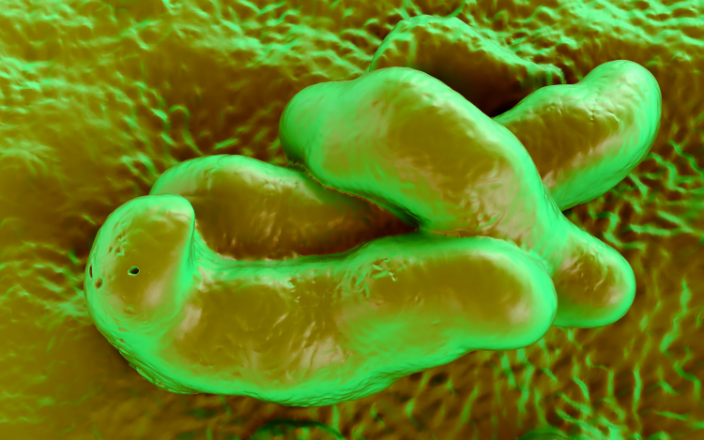Chicken meat is a staple in diets worldwide, with extensive global trade and consumption. However, this popular protein source can harbor harmful bacteria, including Campylobacter. In this article, we explore the prevalence, risks, and preventive measures related to Campylobacter contamination in chicken meat.
The chicken meat production process
- Chicken production begins at hatcheries, where chicks are reared.
- These chicks then move to various farms, ranging from organic operations with free-range rearing to intensive, enclosed chicken houses.
- After 5–7 weeks of growth, the birds are ready for slaughter.
- The subsequent processing stages—slaughtering, dressing, and chilling—are highly mechanized, with processing speeds reaching up to 175 birds per minute.
- The chilled or frozen chicken meat is then distributed and sold at retail outlets.
Campylobacter: a leading pathogen
Campylobacter is a thermotolerant bacterium responsible for a significant proportion of bacterial enteric infections in many countries. Sources of infection include the environment, water, animal contact, and food. Estimates suggest that 42% to 80% of Campylobacter cases are food-related, with poultry meat being a major culprit. In the European Union, 20–30% of human campylobacteriosis cases are attributed to poultry consumption, and 50–80% of these cases are linked to the chicken reservoir as a whole.
The main species involved in the epidemiology of the disease is Campylobacter jejuni and poultry meat is the main source of human infection.
Transmission and prevention
Exposure to Campylobacter from chicken meat prepared in domestic kitchens depends on cooking efficacy and hygienic handling practices. Proper cooking can inactivate the microorganism, but cross-contamination remains a concern. To reduce risks:
- Cook thoroughly: Ensure chicken meat reaches a safe internal temperature (165°F or 74°C) to kill any pathogens.
- Practice hygiene: Wash hands, utensils, and surfaces thoroughly after handling raw chicken to prevent cross-contamination.
- Avoid raw consumption: Discourage consuming raw or undercooked chicken products.
- Educate Consumers: Raise awareness about safe handling practices and the risks associated with Campylobacter.
Ongoing research and control efforts
- Scientific research continues to explore Campylobacter control strategies.
- Recent data and expert meetings have contributed to our understanding of this pathogen.
- Efforts focus on minimizing contamination during primary production, processing, and consumer handling.
- By implementing effective control measures, we can reduce the incidence of Campylobacter-related infections and enhance food safety.
In conclusion, while chicken meat remains a popular choice, awareness of Campylobacter risks and adherence to preventive measures are crucial for public health. Let’s cook our chicken thoroughly and handle it with care to keep our meals safe and enjoyable.
Sources: Available upon request.

